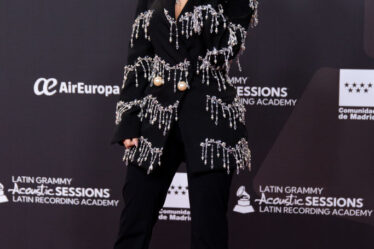
“Quiet luxury”: it’s the newest fashion trend that’s spreading like wildfire. Or is it?
Media reports and countless TikTok videos suggest this style of dressing — favouring elegance and subtlety over loudness and logos — has been embraced by consumers who want to look the part as the economy teeters. But evidence that quiet luxury has taken off is far from conclusive.
While the popularity of HBO’s “Succession” and fascination with Gwyneth Paltrow’s recent courtroom looks have certainly helped drive a spike in conversation about quiet luxury, the street is still packed with unbridled logomania and a parade of barely concealed flesh. In department stores and boutiques, items loudly stamped with brand signifiers still far outnumber minimalist pieces in neutral tones.
According to conventional wisdom, fashion moves in cycles. Yet underlying the smaller cycles of fleeting fashion trends, there are much larger lifestyle tendencies. Two of these — aspirational consumption and casualisation — are deeply rooted in our culture and they don’t bode well for quiet luxury.
In recent decades, shopping for luxury fashion has become a more aspirational pursuit. The average luxury customer no longer consumes to enjoy well-crafted products nor to discreetly signal status to peers, but to broadcast clout to the world, in the street and on social media.
As the author Dana Thomas put it in “Deluxe,” her 2007 book on the transformation of the luxury sector from family-run firms selling rarified pieces to the happy few to corporate behemoths moving millions of units, “consumers don’t buy luxury branded items for what they are, but for what they represent.”
To be sure, some corners of luxury fashion still exist for a small, sophisticated elite that has little to prove and has long dressed in “stealth wealth” labels like Hermès and Loro Piana. But it’s upwardly mobile “new money” shoppers that now drive the majority of luxury sales, and they are much more likely to want to flaunt their newly acquired wealth than to signal it discreetly. Indeed, these days, the vast majority of luxury goods are bought to be loud, not quiet, about one’s purchasing power.
Another reason why quiet luxury feels like a non-starter has to do with the way we dress now. The days of regularly dressing up are gone. Today, men can get into most nightclubs and restaurants in sweatpants. And no one bats an eyelash when women show up to brunch in leggings and a sports bra. The fact is, casualisation has taken hold at a level far deeper than a fashion trend.
It’s true that quiet luxury labels like Hermès and Brunello Cucinelli are performing extremely well. But the messaging from major fashion labels that act as broader stylistic bellwethers has been less clear.
Alessandro Michele’s Gucci exit appears to have had something to do with elevating the brand as well as the waning of his quirky maximalist aesthetic, which would dovetail neatly with the quiet luxury trend. And yet the first look of Gucci’s last show featured a ludicrously non-capacious bra with a crystal logo. For his part, Balenciaga designer Demna’s latest show leaned into his unique style of broad-shouldered, off-kilter tailoring. But most products sold at the brand’s stores still have logos on them, even the suits.
In a recent conversation, with Raf Simons and Bottega Veneta’s Matthieu Blazy, Alaïa designer Pieter Mulier said: “I think what has changed since when we were younger is that fashion, and its audience, is much larger.” He sounded wistful, and understandably so. The days of designers catering to an intimate, knowledgeable, sophisticated audience that dove into the finer details of fashion are gone.
The primary story in luxury fashion over the past 25 years has been the courting of a larger and larger audience with goods whose value is largely symbolic — the louder the better. That genie is now out of the bottle, and no amount of willing quiet luxury into existence can put it back.
Eugene Rabkin is the editor of StyleZeitgeist magazine.


